12 Mar 2020
Buying into a partnership is still a big part of the plan for many veterinary surgeons. But what happens when that plan suddenly has to change? VBJ paid a visit to Swaffham Veterinary Centre in Norfolk to find out...

Staff: full-time equivalent vets 6 • registered veterinary nurses 8 • practice administrators 5
Fees: initial consult £31 • follow-up £26
Like many young vets, Liam Manson and Jon Mills had a dream to one day own their own veterinary practice. So, having worked at the same companion animal clinic for more than a decade, the pair thought their big chance had arrived when the existing partners announced their intention to retire and cash in their chips.
This was six years ago, however, at a time when the corporate buying frenzy was beginning to pick up pace, and it didn’t take long for the practice to come on to the radar of one of the UK’s largest consolidators.
And they clearly liked what they saw as, within days, CVS had bought the business.
This left Liam and Jon with a simple choice; stay on under new owners with no chance of buying in, or stick to their guns and go their own way.
It didn’t take long for the pair to make their decision, and thanks to a meeting with Liam’s wife’s old friend Helen Manning, plans for a new start-up began to take shape.
Helen, an experienced RVN, had managed practices for Medivet and CVS, and she, too, was looking to invest in something new.
Fast forward to the present day, and Liam, Jon and Helen now own a thriving first opinion practice in Swaffham with more than 7,000 registered clients and a turnover in excess of £1.6 million. It has been quite a journey for the three friends, but one that’s taken them precisely where they want to be.
Helen explained: “When we started this, we hoped we might do well and maybe secretly suspected we might, but none of us could have predicted it going this well.
“But the boys [Liam and Jon] had worked at the same practice pretty much since graduation and during that time they’d developed a very good reputation in the area.
“So, when the sale of the previous practice fell through and they decided to start something from scratch, they had a good idea that they would attract clients.
“And that has certainly been the case – we were registering 100 clients a month for the first five years and it is only in the middle of last year that the number of people we were registering dropped below 100 a month – which is phenomenal, really. You get drop off, obviously, with people moving and animals passing away, but we are still registering 80 a month, even now.”

At the time they were first discussing plans, however, Helen had only an inkling of Jon and Liam’s following among pet owners in the area and, for Helen at least, it felt like a gamble.
She said: “I had no concept of how liked they were, so there was a bit of worry as I had a family and a mortgage to pay.
“Also, my partner had to go part time as we had a seven-year-old child at the time, and he
handled the school run and things like that. So it was a bit of a gamble, but it has really paid off.”
In one respect, at least, it wasn’t as big a gamble as any of them were expecting. Despite having to find premises, fit them out, acquire all the equipment needed and staff up, it cost relatively little to get Swaffham Vets off the ground.
Helen, Liam and Jon secured a £100,000 loan from the bank and each went in with £15,000 of their own money; a significant sum for sure, but not as high as many might expect.
And it is partly for this reason that Helen is such an advocate for new independent start-ups in the veterinary sector. She said: “I am always telling people you don’t need that much money to go on your own – we got a bank loan for £100,000, leased the kit we needed and, between the three of us, put £45,000 of our own cash in. And for what we have here, that is not a lot of money.
“I want people to realise that as I want to see more and more people opening their own practices. I am also speaking to vet nurses and telling them to find a vet to open a practice with; it is such a good move.”
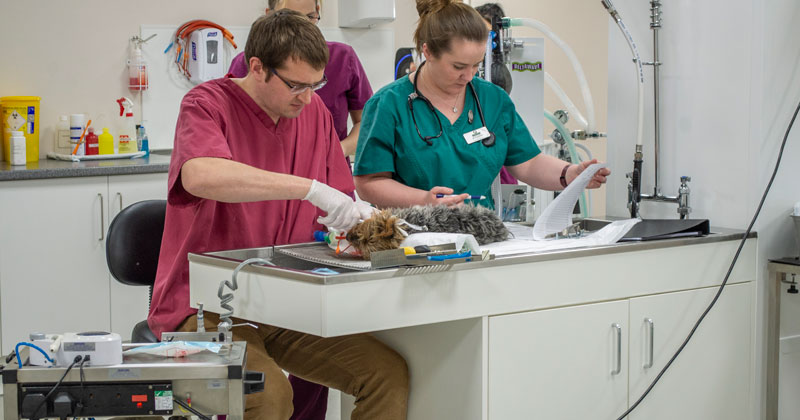
And they certainly got plenty for their money. Sited in an industrial estate on the edge of Swaffham, the practice may not boast the prettiest exterior, but inside, the dour steel unit has been transformed into a modern clinic with everything needed for patients, clients and clinicians.
One of the first things that becomes apparent is its size; the footprint is 8,000 sq ft, which is big for a non-hospital practice. This ample acreage has allowed for a large reception space with separate, well-appointed waiting areas for both cat and dog clients.
There is also a vast preparation area that takes up almost a quarter of the floor plan – the vets love it, but as Helen quipped dryly, “the vets are not the ones who have to clean it”. Other key areas are similarly oversized and while the practice does see a lot of large-breed working dogs, being in such a rural area, the massive theatre space looks big enough to accommodate an elephant.
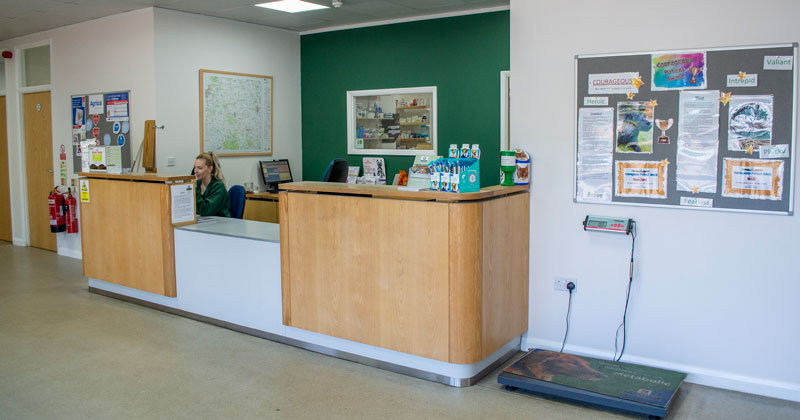
Up front, three large vet consult rooms and a bereavement room feed off the reception space, while a dedicated nurse consult room represents a physical commitment to the importance the practice places on its nursing team.
As a qualified VN, Helen believes the way the nursing talent is deployed is absolutely key to the success of any veterinary practice, large or small.
She added: “Client care is my passion and that should be at the heart of every veterinary practice if that practice wants to be successful.
“Obesity, small furry, puppy and kitten clinics, old age pet clinics – these are all areas when a good nursing team will lead the way and drive revenue.
“It is not about charging for those clinics as most practices don’t, it is about bonding with clients. It is really important clients feel they have someone to talk to in the practice as very often they are scared to ask vets certain questions.
“But they will ask the VN and we often build up the kind of rapport with clients that makes them see us as a friend rather than just a profession. Beyond that, the direct financial benefits would come from a big increase in food sales, dental procedures and lump removals.
“For me, the key thing in practice is to have a dedicated clinic nurse. We do it here and that is one of the big things I have brought to this practice – the importance of the client service and how that is delivered.”
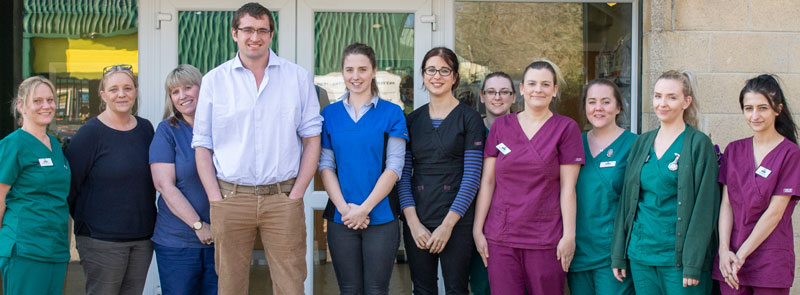
Before any of this could come to pass, the practice needed to be transformed from a large, empty shell into a fully functioning veterinary practice.
In the end this took just 18 weeks, with Helen describing the builders (JD Carter Limited) who project managed and delivered the project as “brilliant”. They stuck to the time scale and the budget, even able to adapt their plan when changes were made on the fly.
An example of this is the window that was added in the dispensary to give a view of the reception area – a small point, but an important one if clients begin to bottleneck while waiting for prescriptions to be filled.
Being on an industrial estate meant plenty of space for parking outside, but the surfeit of space inside the building did mean not all of it was put to use initially.
Originally, only two-thirds of the building was developed while talk of a mezzanine (there is 30ft of space exists up to the roof) was shelved due to the potential cost.
All equipment was leased, including digital x-ray and ultrasound, and the practice opened on 4 May 2014 with three consult rooms and a total staff of just four – Liam, Jon, Helen and a VN. But with clients flooding over from Liam and Jon’s old practice in Dereham, and pet owners in Swaffham and its surrounding areas showing a lot of interest, it didn’t take long before plans had to be redrawn.
Within 18 months of opening, the builders were back in to extend the dog ward and add two new consult rooms. As a result of the continued expansion, staffing levels have increased accordingly, with the practice now employing six vets, eight RVNs, one student nurse and five administration/support staff, including Helen who, as well as being a director along with Liam and Jon, also works as practice manager.
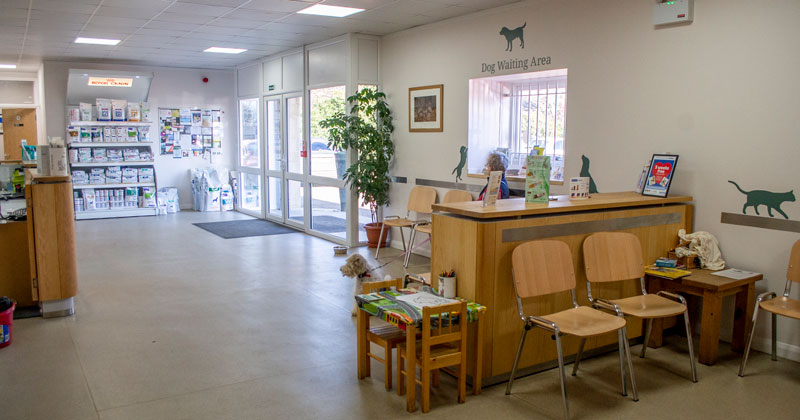
For some practices, staffing up so significantly in a relatively short space of time could have been a problem and many businesses find expansion plans stall due to lack of suitable staff.
But, despite what seems a national trend, recruitment was not a problem for the team at Swaffham, as Helen explained: “We have never had a particularly hard time employing nurses or vets; its been relatively easy as people want to work for an independent, and I like to think we are nice to our staff and we pay well.
“We also have that flexibility because we are not corporate; if something needs to change – days, hours, wages – the three of us will talk and we can make that happen. We do our own out-of-hours because we felt that was the right thing for our patients and our clients being in such a rural area many miles from the nearest OOH provider. That could be an issue when it comes to recruiting, but, that said, we have had new grads come to us who have said they want out of hours because that is how they learn – especially as one of our vets, Helen [Nelson], has an emergency and critical care certificate. As we expanded, the rota has got better, too, which helps with recruiting – we started off on a one in two for the nurses, and we are now on a one in eight and the vets are on a one in five.”
Perhaps surprisingly, given the publicity regularly given to the lack of available vets on the job market, it is the supply line of veterinary nurses that is the greatest concern to Helen.
A recent advert for a trainee nurse received more than 50 applications and this, according to Helen, hints at an underlying training problem. She added: “There are just not enough VNs out there, but there are clearly people out there that want to do it, just not enough training spaces in practices available.
“I don’t think nurses are valued enough and a lot of practices are not interested in training nurses; it can be a challenge and I am sure the high staff turnover in the profession does not make practices any more inclined to invest in training nurses who may not be there long.
“Thankfully we have a nursing team committed to training and supporting the next generation of VNs, and we have a good record of keeping hold of these vital assets to the practice.”

Keeping hold of clients is clearly not a problem either, with the practice continuing to register dozens a month. And for Helen this is, in part, due to growing awareness among pet owners about the benefits of independent practice. She said: “It is really important we keep a healthy independent sector in the veterinary profession and I think it is what clients want, too.
“Owners and clients are so much more aware of the difference between corporate and independent now than they used to be even six or seven years ago. People will actually telephone us and ask if we are an independent practice as it clearly matters to them – certainly when people realised a new independent was opening up here, the phone didn’t stop ringing and its not stopped ringing since.”
With an expanding, busy business a downside can exist, of course. Increased workloads, busier days and all the usual stresses of working in first opinion practice can leave staff feeling under pressure and this is something Helen keeps a keen eye on.
She added: “I am very hands on in looking after the team and taking care of them, and it is really important. It’s a really emotional job – it can be a roller coaster and there can be a lot of compassion fatigue, so you have to be on the ball when it comes to looking after people – it is like looking after members of my family.
“It is not just work issues we talk about – sometimes it is personal problems that we are discussing and that is important. These are issues throughout the profession and it is my view that they need dealing with on a day-to-day practice level because of the nature of the work we do.”
The focus at Swaffham Veterinary Centre is very much on “the provision of excellent first opinion veterinary care” and while Liam does handle some orthopaedic cases, anything more complex goes on to Dick White Referrals.
And despite not running one in the previous practices she has managed, Helen has brought in a health plan that provides a solid, if unspectacular, revenue stream from the 19 per cent of the client base that have taken it up.
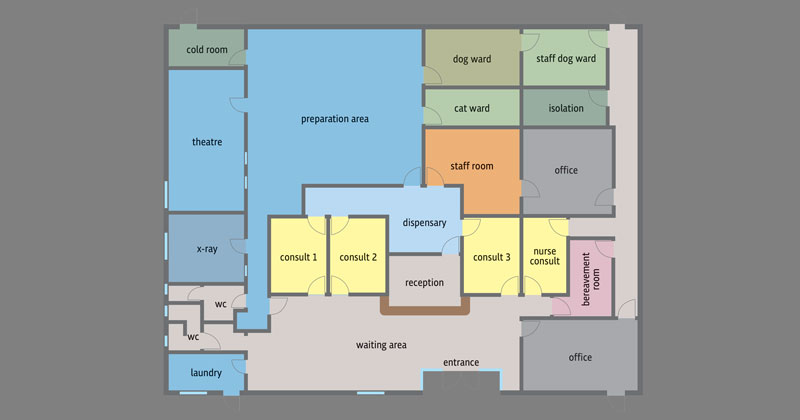
It is clear Helen, Liam and Jon did not set up the practice to “take over the world” and all three owners are committing to slowing down a little after a frantic period of growth. But with demand for their services showing no sign of abating, Helen has mused with the prospect of opening a second site.
She added: “We had looked at the idea of opening another practice and I had looked at a new model of ownership.
“I looked at staff ownership and it is actually quite a good business model as it makes everyone part of the practice and I think that would be a great thing to do – it works okay for Waitrose and John Lewis. So if we did it again and there are opportunities to do it, we might go down that route.
“But the main thing is for us to slow down a bit and enjoy a better quality of life, and for the practice to continue to be a positive and happy place to bring your pets and to come to work.”